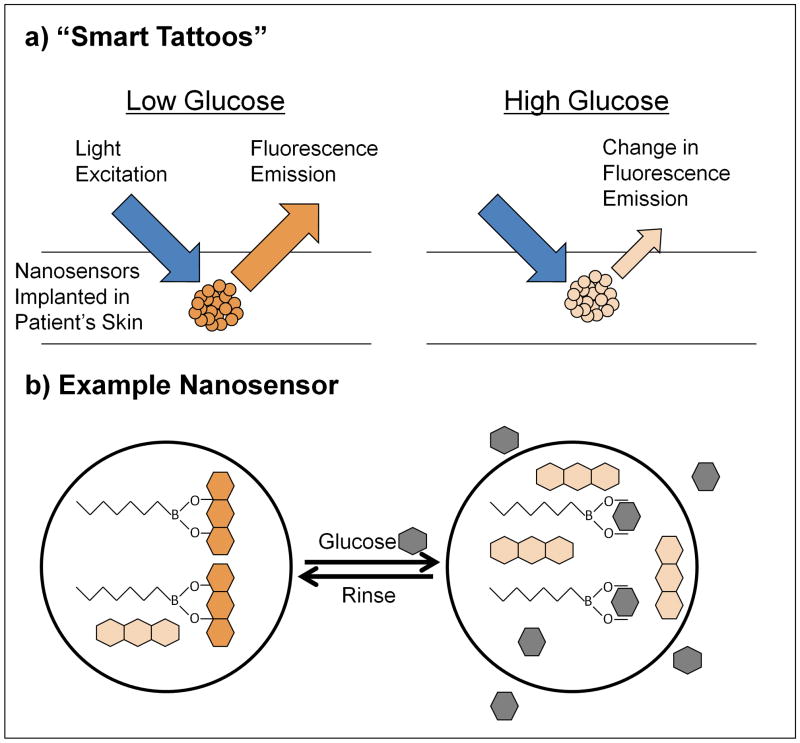Figure 2.
Polymeric nanosensors for “smart tattoos.” Smart tattoos (a) are implanted in the skin of a patient to assist with continuous monitoring of glucose levels. The sensors change their fluorescent properties with glucose concentration, which allows optical interrogation of glucose levels without blood draws. One example of this class of sensors (b) is nanosensors composed of a hydrophobic polymer containing lipophilic glucose recognition elements and fluorescent reporters. In the absence of glucose (left), the boronic acid-based recognition element is bound to the reporter alizarin (orange), forming a fluorescent complex. In the presence of glucose (right, gray), the boronic acid binds to glucose, extracts it into the sensor core, displacing the fluorophore alizarin in the process, rendering it nonfluorescent (light orange). This causes a decrease in fluorescence, signaling detection of glucose through optical interrogation [67].

